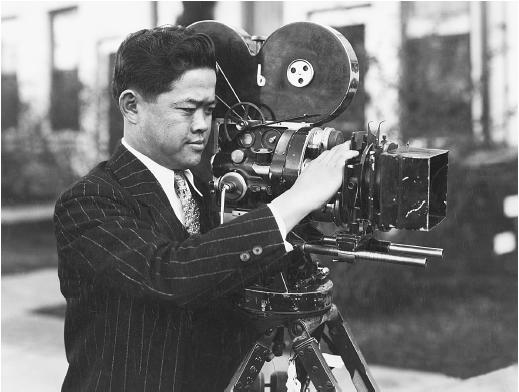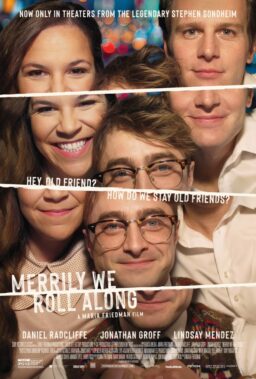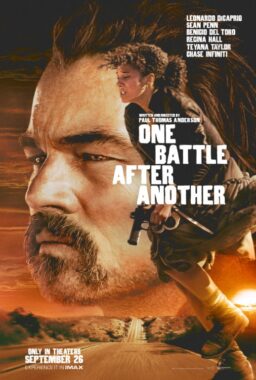The Chicago International Film Festival turns 21 in 1985, and as its birthday approaches, these are some memories from its long coming-of-age:
In the 1967 film festival, a young New York University graduate named Martin Scorsese premiered his first feature film, “Who’s That Knocking at My Door?” I thought the film was brilliant, and said so in my review, adding, “In 10 years, Scorsese will be the American Fellini.” A day later, I got a call from Scorsese, who said, “Jeez, do you think it’s gonna take that long?”
A few years later, a tall, mustachioed Peruvian named Armando Robles Godoy came to Chicago with a film named “The Green Wall” under his arm. It told the story of a young family that moved as homesteaders to the Peruvian jungle, and the father’s struggles with bureaucracy as he attempted to make a success of the farm and save his son’s life. The movie was greeted with standing ovations by Chicago audiences, but never really got a chance in national distribution — evidence that a festival may be the only chance some movies ever get.
In 1975, two young Los Angeles filmmakers, Gregory Nava and Anna Thomas, came to the festival with “The Confessions of Amans,” an enchanting, beautifully photographed story of the adventures of a medieval scholar. They had made it for less than $25,000, but it won the “best first feature” award and launched their careers. Two years ago, their “El Norte” be came the top-grossing Spanish-language film in U.S. box office history.
In 1969, festival director Michael J. Kutza held the first U.S. screening of a film by Rainer Werner Fassbinder, then a little known West German enfant terrible. Some of the festival’s critics complained that New York got Truffaut and Godard, but we got… Fassbinder? Within a few years, Fassbinder and the New German Cinema that he spearheaded produced some of the most consistently interesting films in Europe.
We got Truffaut, too. His “Day for Night” won the 1975 festival and three years ago, he visited Chicago for an onstage appearance – a farewell, as it turned out, before his early death last year. Among his highly personal opinions was the provoking observation that an anti-war film may be impossible to make be cause all war scenes on film are, by definition, exciting.
Gloria Swanson arrived for the 1980 film festival by train. Refusing to fly, she booked an Amtrak compartment from New York to Chicago, explaining that she traveled to Chicago by train in the old days and saw no need to change now. She emerged from the train to a battery of press and TV reporters, and the obligatory flash bulbs popped while she said she was exhausted by the trip, the diner had horrible food, and she planned to fly home. Then she told us we would live to her age and more if we didn’t eat sugar. She remembered making Chaplin shorts here in the still-existing Argyle Street Studio,
There was something a little magical about the programs over the years in which technicians explained their secrets. The legendary cinematographer James Wong Howe visited the festival and told a story about how part of his legend began. Shooting silent star Mary Miles Minter, he found that her light eyes did not photograph well. So he shrouded his camera in dark velvet, and as her eyes reflected the darkness, they became infinitely more photogenic. To naive observers, however, Howe was working some arcane magic under his shroud and using it to hide his professional secrets. It took Hollywood a long time to figure out that the velvet shroud was the secret.
Crusty old Howard Hawks came to the festival one year and talked about working with John Wayne. Their last three Westerns were essentially reworkings of the same basic story.
“I directed him in a film named ‘Rio Bravo,’ Hawks said. “Then I directed him in a film named ‘El Dorado.’ When it came time to make ‘Rio Lobo.’ I called him up and asked if he wanted to see the script. ‘Hell, no,’ he said. ‘I’ve already made the goddamned thing twice. Just tell me when to start work’.”
Veteran director George Cukor visited the 1979 film festival and told stories about his old pal Katharine Hepburn: “Miss Hepburn always hated chlorine in the water of a swimming pool. When she visited my house, she’d put in fresh water. You could always tell she was in residence because of the green slime in my pool.”
Yugoslavian director Dusan Makavejev, one of this year’s jurors, visited the festival for the first time in 1968. All he wanted to see was the Biograph Theater, where “Jawn Deel-in-jar” was shot dead by the FBI. Standing in the alley next to the theater, looking at a telephone pole that once allegedly had been riddled by the bullets of the G-Men, he said he was deeply moved and vowed to come to Chicago to make a movie about Dillinger. (He never has, but it was an emotional moment, anyway.)
Various strange events have occurred during films, none perhaps stranger than the night that documentarian Les Blank premiered his film “Garlic Is as Good as Ten Mothers” while frying garlic in the back of the theater.
There was a curious feeling of anticlimax on the night that Busby Berkeley and Ruby Keeler came to the festival. Kutza edited together the carefully choreographed production numbers from all of Berkeley’s musicals, and they came to a program of more than three hours. The audience cheered the first masterful orchestrations of smiling faces and synchronized legs, but eventually grew glassy-eyed as one geometrical arrangement of torsos followed another. Finally, there were walkouts. It would have been better to show only a selection from Berkeley; strung together, his great moments revealed an unexpected shortage of variety.
Although many of the festival’s entries over the years have been real yawners, some Chicago premieres created electric excitement. Jack Nicholson still remembers the festival’s first public showing of “One Flew Over the Cuckoo’s Nest,” which was interrupted by standing ovations – the first time I’ve ever seen that during a film.
Sometimes the electricity was premature. There was a near mob scene on the night in 1967 when the festival premiered two underground films by John Lennon and Yoko Ono. The lucky fans who pushed in through the doors were treated, alas, to an interminable slow-motion study of a butterfly flying across the screen, three frames a minute.
Those are mostly happy memories from the past.
The Chicago Film Festival is not the best film festival in America, but it’s the only one we’ve got, and in its 21st year perhaps we can hope that it will outgrow the disorganization of adolescence. Maybe in another 10 years our festival will be as challenging as Telluride, as organized as Toronto, as friendly as Montreal.
Jeez. Do you think it’s gonna take that long?












